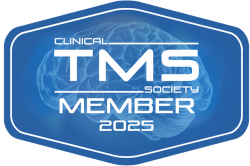
About 10 million Americans experience Seasonal Affective Disorder (SAD) every year. That’s a lot of people struggling with mood changes, fatigue, and a sense of hopelessness just because the seasons shift. If you’ve ever felt unusually low during the winter months or know someone who dreads the colder, darker days, you’re not alone. The “winter blues” aren’t just a passing feeling—they’re a legitimate type of depression that can deeply affect your quality of life.
What’s even more surprising? SAD doesn’t just happen in winter. While most people associate it with fall and winter, some experience a less common form during the spring and summer. This shows how much our circadian rhythm—our internal clock—is tied to the changing light and seasons.
But the good news is you don’t have to let the seasons control your mood. With the right strategies and professional support, you can manage seasonal depression and reclaim your energy levels and daily life. Let’s explore the causes, symptoms, and solutions to this seasonal challenge, including some cutting-edge treatments that can make a big difference.
Understanding SAD
SAD is a type of depression tied to the seasons. It’s most commonly seen during the fall and winter when shorter days and less sunlight disrupt your body’s circadian rhythm. This internal clock regulates your sleep-wake cycle, mood, and energy levels and thrives on light. Without enough sunlight, your body may struggle, leading to fatigue, mood changes, and other symptoms of depression.
There are two types of SAD:
Winter SAD (the winter blues)
This is the most common form and occurs in the fall and winter months. You might feel more tired, crave carbohydrates, and withdraw from social activities. It’s not just about feeling a little off—SAD symptoms like oversleeping, low energy, and hopelessness can make it hard to get through your daily life.
Summer SAD
Though less common, summer SAD occurs during the spring and summer months. Symptoms are often the opposite of winter SAD, such as weight loss, anxiety, and trouble sleeping. Increased sunlight and heat can affect your internal clock, leading to these changes.
How Common Is SAD and What Causes It?
SAD affects millions of people each year, with women being more likely to experience it than men. While the exact causes aren’t fully understood, experts believe shorter days disrupt your body’s production of serotonin (the mood-stabilizing hormone) and melatonin (the sleep hormone). These disruptions affect your circadian rhythm and can lead to loss of interest in activities, difficulty concentrating, and emotional distress.
When Should You Seek Help?
If you notice that your SAD symptoms last more than a few weeks or interfere with your daily life, it’s time to reach out to mental health professionals. Symptoms like feelings of despair, tearfulness, persistent low mood, or low self-esteem shouldn’t be ignored. Also, if you’re having thoughts of self-harm or suicide, seek immediate medical help.
SAD often improves when the seasons change, but that doesn’t mean you have to wait it out. Effective treatments and lifestyle adjustments can help you regain control.
Lifestyle Changes to Help Manage SAD

Small, intentional changes can make a big difference. Here are some practical strategies I often recommend:
- Light therapy: Use a light box that provides 10,000 lux of light for 30 minutes each morning. Lightboxes mimic natural sunlight and help regulate your internal clock.
- Vitamin D supplements: Many people with SAD have low vitamin D levels. A daily dose of 2,000 IU can support your mood and energy levels.
- Go outside: Spend time outdoors during the daylight hours, even if it’s cloudy. Natural light helps reset your body’s natural rhythms.
- Exercise regularly: Aim for 30 minutes of physical activity most days. Exercise boosts serotonin, improves mood, and increases energy.
- Stay connected: Social withdrawal is common, but staying connected to friends and family can provide emotional support and reduce isolation.
- Maintain a routine: A structured daily routine can create stability and combat feelings of disorganization or low motivation.
- Healthy diet: Focus on foods rich in omega-3 fatty acids, whole grains, and fresh fruits and vegetables. Limit sugar and caffeine, which can cause mood swings.
- Mindfulness practices: Yoga, meditation, or deep breathing exercises can reduce stress and help you feel grounded.
- Engage in hobbies: Activities like reading, puzzles, or crafting can keep your mind active and provide a sense of accomplishment.
Advanced Treatment Options for Persistent SAD
If lifestyle changes and traditional therapies like medication or talk therapy don’t provide enough relief, more advanced options are available. These treatments address the root causes of seasonal depression in ways that standard approaches may not. Here’s a closer look at the most effective options:
Transcranial Magnetic Stimulation (TMS)
TMS is a breakthrough, non-invasive treatment that uses magnetic pulses to stimulate brain areas involved in mood regulation, particularly the prefrontal cortex. This therapy can help restore balance to your brain’s chemistry, which is often disrupted in people with seasonal affective disorder (SAD).
TMS is safe, well-tolerated, and typically requires a series of sessions to achieve optimal results. Many people experience significant improvements in their symptoms of depression, including increased energy and better mood.

SPRAVATO® (Esketamine)
This FDA-approved nasal spray is designed for individuals with treatment-resistant depression, including those experiencing severe seasonal depression. SPRAVATO® works differently from traditional antidepressants by targeting the brain’s glutamate system, which can help alleviate symptoms quickly—often within hours or days.
It’s also effective for people with depression who are dealing with suicidal thoughts or those who feel disconnected despite other treatments. Administered under the guidance of a mental health professional, SPRAVATO® offers hope for those who need fast relief.
Ketamine Infusions
Ketamine therapy is another promising option for treating various types of depression, including SAD. It’s administered intravenously in a controlled setting and works on NMDA receptors in the brain to rapidly reduce depressive symptoms.
Unlike traditional treatments, which may take weeks to show results, ketamine often provides relief within hours. It’s especially beneficial for those with persistent symptoms, helping restore emotional balance and energy when other treatments fall short.
Combination Therapy
A tailored approach combining multiple treatments—like TMS and psychotherapy or SPRAVATO® with lifestyle changes—delivers the best results for some people. Addressing both the biological and emotional aspects of seasonal depression allows for a more comprehensive recovery.
Why Consider Advanced Treatments?
Advanced therapies like TMS, SPRAVATO®, and ketamine infusions represent a new frontier in mental health care. They’re backed by extensive research, have high success rates, and offer hope for those who feel trapped by persistent SAD symptoms. If traditional care isn’t enough, these treatments can provide a pathway to renewed energy, emotional balance, and an improved quality of life—even during the toughest winter months.
Remember, you don’t have to face this alone. Relief Mental Health specializes in cutting-edge therapies for seasonal affective disorder, giving you access to innovative care tailored to your needs.

